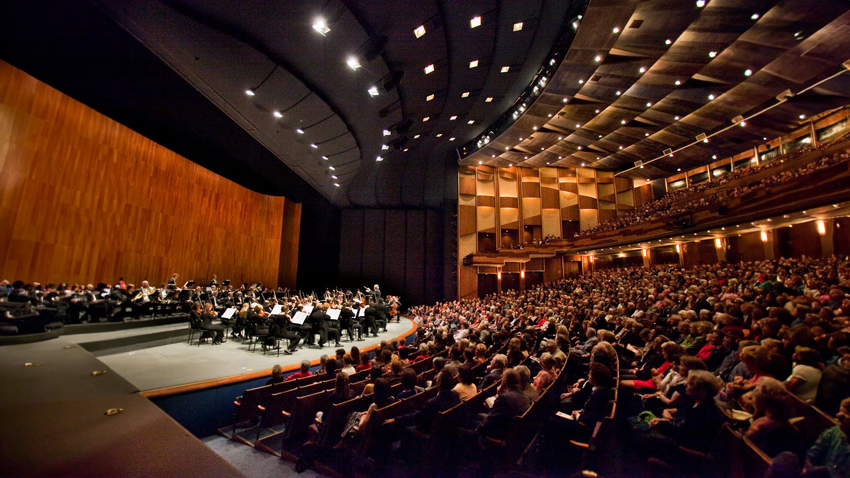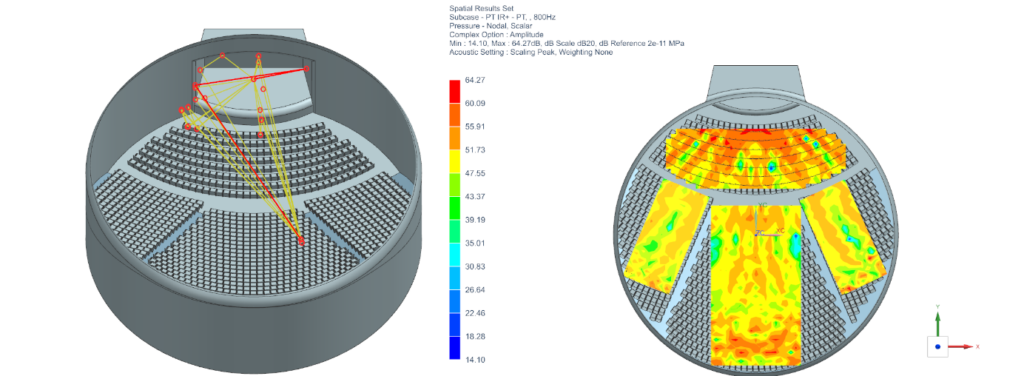The Sound of Science: explore the world’s greatest concert venues using the Industrial Metaverse

There’s a unique thrill to live music that no recording can quite capture. The way the sound swells and reverberates through a grand concert hall, the energy of the crowd, and the sense of being part of something ephemeral and extraordinary. It’s magic. Now, imagine being able to experience that magic from the comfort of your own home using a VR app that virtually transports you to some of the world’s most iconic concert venues. This is precisely what the Sound of Science app, a collaboration from Simcenter and Siemens Arts, promises to do.
Part 1: Virtual Reality
I recently had the pleasure of being an early tester of the new Siemens “Sound of Science” VR app, which promises to reshape our understanding of music, architecture, and perhaps even the human experience itself. The Sound of Science VR system employs Simcenter Acoustics in tandem with a Virtual Reality headset to catapult one from the monochrome mundanity of an office to the sonorous splendour of the world’s most magnificent concert halls.
My initial moments inside this virtual world were disorienting—a common symptom for first-time VR users. Yet, it wasn’t long before I was waving my hands like an orchestral conductor, navigating the interface to manipulate the auditory parameters offered by the simulation. In real life, my budget often relegates me to the nosebleed seats at live performances, but the Sound of Science system offers a more egalitarian experience. With a mere flick of the wrist, the headset transported me to various vantage points—from the cheap seats to the conductor’s podium, even amidst the orchestra (albeit at a prudent distance from the percussion section).
The VR headset transported me to Salzburg’s Grosses Festspielhaus, a venue offering its own unique acoustic fingerprint. The Grosses Festspielhaus, a cavernous space that accommodates over 2,000 patrons, belies its size with an acoustic intimacy famously lauded by Austrian conductor Franz Welser-Moest. This seemingly magical aural experience owes its existence to meticulous engineering. The hall’s reflective surfaces near the stage are ingeniously arranged in a funnel-like configuration, achieving a harmonious acoustic ‘coupling’ between the stage and audience—a synergy that subtly echoes the architectural sensibilities of ancient Greek theatres.

Part 2: The Power of the Digital Twin
Siemens has developed a digital twin especially for large event spaces. The technology makes it possible to realistically reproduce and simulate very precisely a building’s acoustics and structure. The Sound of Science application was used for the first time in the Grosses Festspielhaus at the Salzburg Festival. With it, event organizers can virtually explore how acoustics change in different spatial configurations—for example, how adding acoustic panels affects the listening experience—in order to select the optimal acoustic scenario. Orchestral formations on the stage can also be tested and arranged in advance, saving money, resources, and time.
The Sound of Science simulation can measure the echo and reverberation of a sound in a 3D model and simulate how sound waves propagate in a room. Siemens’ Simcenter uses a combination of impulse response measurements and ray tracing for the 3D modeling of each event space, reproducing the individual sound signature of each venue, its acoustic DNA.
Predicting the acoustic response for a large volume in the audio range or around a big geometry (like airplanes, cars, or even a city) is prohibitive from a computational point of view using classic Finite Element Method or Boundary Element Method. They require extensive mesh refinements to capture higher frequencies, which quickly increases the model size. Ray acoustics modelling makes exploring performance in such scenarios feasible by assuming that the sound propagates along rays, a valid assumption at high Helmholtz numbers.

The Simcenter 3D Ray Acoustics solution integrates an engineering environment to generate and post-process a ray acoustic model. This solution includes adaptive beam tracing, multi-order diffraction, and particle tracing to simulate acoustic propagation accurately. These innovations help predict the acoustic behaviour of rooms and auditoriums, making it possible to compute sound quality criteria such as reverberation time, clarity, and speech definition.
Part 3: Into the Metaverse
In a world increasingly blurring the lines between the physical and the virtual, the Sound of Science system isn’t merely an innovative gadget; it’s a frontier in artistic experience and human connection. With this technology, the concert hall of the future is not just a place but an ever-changing dynamic entity that enhances our most sublime expressions of culture and art. Imagine concert halls that dynamically tailor their acoustics to suit both Wagner’s grandiosity and Debussy’s subtlety—or even the contrasting movements within Beethoven’s Symphony No. 9.
The Sound of Science app also highlights the broader implications for the Industrial Metaverse. Digital twins, like the one used in the Sound of Science, are not only transforming the everyday for many companies but are also creating new opportunities for the cultural and creative industries. They allow us to plan stage productions better, simulate them acoustically in advance, and optimize spaces for the best possible listening experience.
Part 4: Finale
Experiencing the Sound of Science was a journey through acoustics and innovation. From the disorienting first moments in VR to the profound appreciation of meticulously engineered soundscapes, the app opened my ears and mind to the future of concert hall design. As Siemens continues to refine this technology and expand its applications, we can look forward to a world where the magic of live music is accessible to everyone, anywhere, at any time. The Industrial Metaverse, with its digital twins and virtual simulations, is not just a concept for the future; it’s a reality we’re beginning to experience today. And it sounds absolutely phenomenal.
Read more on Hacking Acoustics: Sound of Science and the Power of Digital Twins


